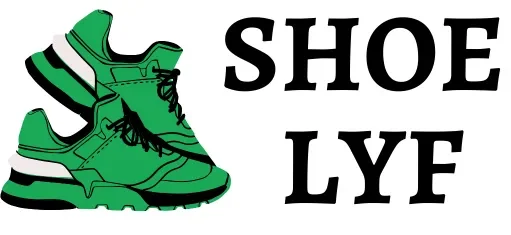Heading out on a scenic hike is one of life’s simple pleasures. Breathing the fresh air, working up a sweat, and taking in those picturesque views? Yes please! But having the right footwear can make or break the whole experience.
That’s why you might be wondering if you can rock your trusty Converse sneakers on the trails. Those classic chucks have an iconic look and casual cool factor that’s hard to beat. But are they actually suitable for hiking?
The short answer? Converse are far from ideal hiking shoes. But this write-up isn’t meant to be a hardcore smackdown on your chucks. Instead, let’s look at why Converse aren’t really built for serious hiking, yet explore some tips and situations where you may be able to get away with wearing them on milder trails.
At the end of the day, proper hiking footwear is about safety, traction, and preventing fatigue and injury. Knowing the pros and cons of Converse in this arena will help you make smarter decisions for your adventures on the trails.
Why Converse Fall Short for Most Hiking
To understand why Converse aren’t ideally suited for hiking, you have to look at their core design and construction:
- Flat, flexible rubber outsole with iconic diamond tread pattern
- No built-in shank for stability or protection
- Low-cut silhouette doesn’t provide much ankle support
- Thin, flat footbed doesn’t contour to your arches
- Canvas uppers don’t vent sweat or prevent water seepage
- Lack of toe protection from roots, rocks, and debris
In contrast, proper hiking shoes and boots incorporate features like:
- Rugged outsoles with deep, grippy lugs for serious traction
- Shanks or plates for underfoot protection and stability
- Ankle collars and reinforced heel counters
- Waterproofing and moisture-wicking uppers
- Cushioned, contoured footbeds for all-day comfort
- Protective toe boxes and bumpers
The very minimalist construction of Converse sneakers leaves you lacking critical support, protection, and traction on uneven terrain. They aren’t designed to handle the demands and abuse of hiking trails.
Even just wearing Converse on a short dayhike opens you up to risks like:
- Twisted, rolled ankles from lack of support
- Pain and fatigue from lack of cushioning for your arches
- Wet, blistered feet that slide around with no grip
- Bruised toes from no toe protection
- Falls and slides from poor outsole traction
Does that mean you have to permanently ban your Converse from the trails? Not necessarily. But you definitely shouldn’t treat them like proper hiking shoes or boots.
When Converse Chucks Can Work for Light Hiking
With those drawbacks in mind, there are still some scenarios where you may be able to wear Converse for more casual, gentle hiking if you take some key precautions:
Only On Flat, Well-Maintained Paths or Trails
The most important factor is the terrain itself. Converse can potentially work decently on flat, packed dirt or gravel paths without too many rocks, roots, or other debris in the way. Gentle hills are usually okay too.
But as soon as the terrain gets significantly uneven, steep, muddy, or overgrown, it’s best to leave the Chucks behind. Sketchy traction can lead to slips, twisted ankles, sore feet, and other issues.
Just for Short, Casual Hiking Outings
Another factor is the duration and intensity of your hiking. The longer and more strenuous, the less suitable Converse become.
Chucks can potentially be okay for short 1-2 mile hikes or a couple hours of activity. But anything longer than that, and their lack of cushioning, traction, and support will start to cause serious discomfort and fatigue.
They’re best reserved for super casual strolls and short loops only.
Wear Proper Hiking Socks
One of the key ways to get more mileage out of Converse on the trail is with good quality hiking socks. Look for crew-length wool or synthetic blends with reinforced footbeds, underfoot cushioning, and moisture-wicking capabilities.
The right hiking socks can provide more impact protection, stability, and blister prevention than standard socks – crucial when dealing with thin chucks.
Consider Adding Insoles or Inserts
You can also help make up for some of the shortcomings of Converse by adding aftermarket insoles or inserts. Affordable options like Superfeet can add more structured arch support and shock absorption.
Just note that insoles will take up a bit of interior volume, so you may need to size up a half-size in your Chucks.
Pay Attention to Weather and Trail Conditions
Another factor that can impact how suitable Converse are is the current weather and trail conditions. Their canvas uppers do exactly zero to block out moisture.
So if there’s been recent rain or you’ll be encountering water crossings, streams, or mud, your feet will get soaked fast. Slick outsoles also become ultra sketchy in wet environments.
Dry, warm conditions are best if rocking Converse on the trails. But be prepared for your feet to potentially get wet and grimy.
When to Leave Your Chucks at Home
While you can get away with wearing Converse for light trail use if you know what you’re getting into, there are definitely plenty of situations where they should stay at home. These include:
- Strenuous or technical hikes with steep grades
- Hikes involving scrambling over rocks or off-trail travel
- Long day hikes lasting more than a couple hours
- Trails with lots of mud, water, or loose debris
- Cold weather when warmth and insulation are crucial
In these more intense scenarios, proper hiking boots or trail runners with premium support, protection, and traction become non-negotiable. Skimping with subpar footwear like Chucks puts you at serious risk of injury or just being plain miserable on the trails.
There’s a reason avid hikers invest in quality, purpose-built hiking footwear with grippy outsoles and ample underfoot support. It helps prevent turned ankles, bruised feet, pulled muscles, and other trail trauma. Don’t cheap out!
The Verdict on Hiking in Converse
At the end of the day, should you plan entire backpacking trips or rugged outdoor adventures in your beloved Chucks? Absolutely not – they simply lack the traction, protection, and construction to hack it on technical trails.
But can you squeeze some light-duty hiking use out of Converse on well-maintained, flat paths if you use some precautions and are reasonable about the terrain and duration? For some, the nostalgic style points may be worth it.
Just be sure to have proper footwear for more intense hikes and don’t try to force Chucks into duty they aren’t designed for. A twisted ankle or bruised feet from improper footwear can ruin a nice hike quickly.
If you find yourself regularly wanting to wear casual sneakers on hiking trails, you’re probably better off investing in a quality pair of trail runners or hiking shoes from outdoor brands like Merrell, Keen, or Salomon. They’ll blow Chucks out of the water in terms of performance, grip, and long-term comfort on the trails.
But for short, easy excursions where looking cool takes priority over max performance? Lace up those Converse and hit the trail – just stay aware of the terrain and be ready to hop right back in the car if the need arises.
Related FAQs
Do hiking shoes need to be broken in?
Yes, it’s generally recommended to break hiking shoes or boots in before tackling intense trails. Wear them around the house or on short, easy walks first to help soften them and eliminate hot spots.
Can you wear running shoes for hiking?
Running shoes can work for light day hiking, but aren’t ideal for intense trails. The lack of ankle support, protective toe boxes, and rugged traction will leave you prone to twisted ankles and bruised feet.
How long do quality hiking shoes/boots last?
With proper care and rotation, quality hiking footwear built for rugged use can last 500-800 miles before needing replacement. Lighter trail shoes may only last 300-500 miles.
What are some good hiking socks to wear?
Look for quality crew-length wool or synthetic hiking socks with reinforced footbeds, underfoot cushioning, and moisture-wicking capabilities. Darn Tough, Smartwool, and Injinji are good brands.
Should hiking shoes be waterproof?
For wet conditions and creek crossings waterproof hiking shoes are ideal to keep your feet dry. But non-waterproof, breathable shoes are better for hot conditions and reducing sweat buildup.

